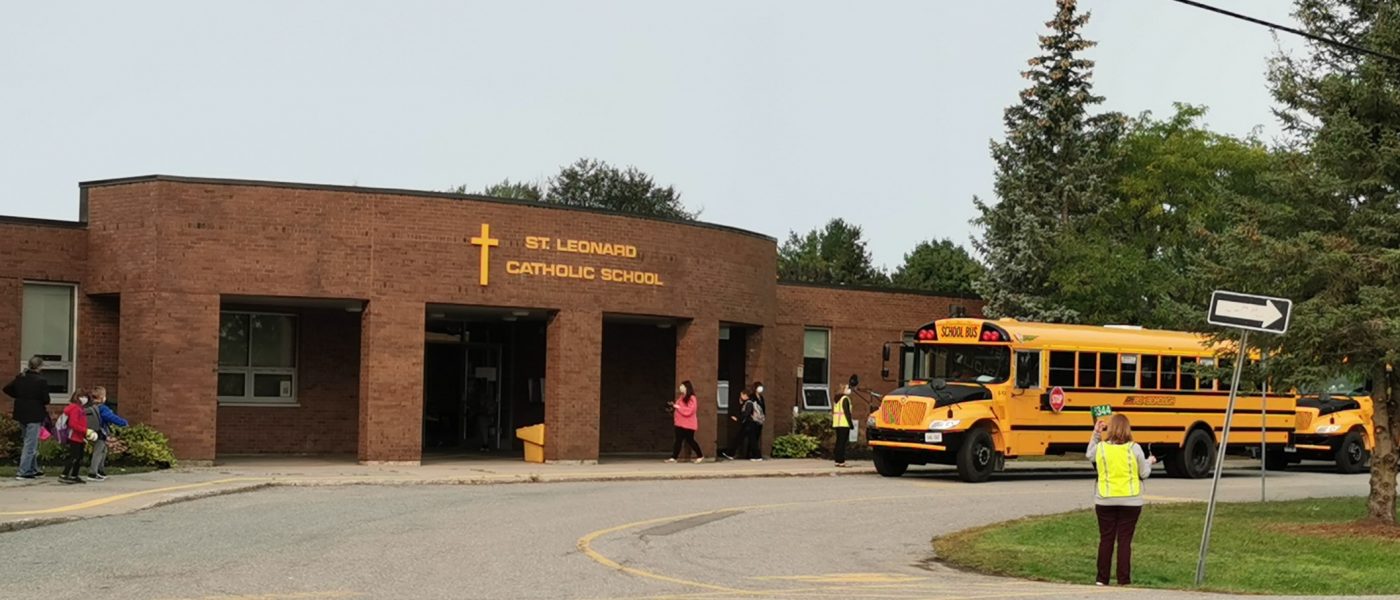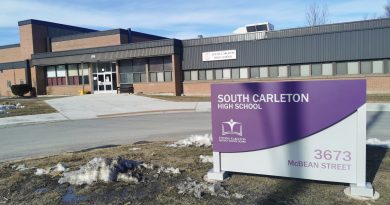No timetable set for return to classroom learning
By Manotick Messenger Staff
As COVID-19 numbers spiked to record highs both locally and provincially, there is no time frame for students to return to in-school learning.
Before the April Break, St. Leonard Catholic Elementary School in Manotick was closed because of a COVID-19 outbreak, and St. Philip Catholic Elementary School in Richmond also reported cases. Many teachers and parents are bracing for a potential repeat of the end of the 2019-20 school year, when students did not return to classrooms after the March Break.
The decision to close schools in the province was made by Premier Doug Ford on Monday, April 12, which was the first day of the school break. The move was made in response to the rapid increase in COVID-19 cases, the increasing risks posed to the public by COVID-19 variants, and the massive spike in hospital admissions.
“We are seeing a rapidly deteriorating situation with a record number of COVID cases and hospital admissions threatening to overwhelm our health care system,” said Premier Ford. “As I have always said we will do whatever it takes to ensure everyone stays safe. By keeping kids home longer after spring break we will limit community transmission, take pressure off our hospitals and allow more time to rollout our COVID-19 vaccine plan.”
With appropriate measures in place, schools have been safe places for learning throughout the pandemic, as confirmed by the Chief Medical Officer of Health and local medical officers of health and have demonstrated low rates of in-school transmission. However, increasing rates of community spread pose a threat to the health and safety of school communities. As a result, all publicly funded and private elementary and secondary schools in the province are to move to teacher-led remote learning when students return from the April break on April 19, 2021. Private schools operating in-person this week are to transition to remote learning by April 15, 2021. This action is being taken in support of the Government’s broader efforts to limit the spread of COVID-19. Data will be assessed on an ongoing basis and health officials will be consulted to determine when it will be safe to resume in-person learning.
Childcare for non-school aged children will remain open, before and after school programs will be closed and free emergency child care for the school-aged children of eligible health care and frontline workers will be provided. To protect the most vulnerable, boards will make provisions for continued in-person support for students with special education needs who require additional support that cannot be accommodated through remote learning.
“This was not a decision we made lightly, as we know how critical schools are to Ontario students,” said Education Minister Stephen Lecce. “Our priority has always been to keep schools open, however sharply rising community transmission can put our schools and Ontario families at risk. While Ontario’s plan has kept schools safe, as confirmed by the Chief Medical Officer of Health, we are taking decisive and preventative action today to ensure students can safely return to learning in our schools.”
Case rates, hospitalizations, and ICU occupancy are increasing rapidly, threatening to overwhelm the health care system. The number of COVID-19 hospitalizations in the province have increased by 22.1 per cent between the period of April 4 and 10, 2021. In addition, during this same period of time, Ontario has seen the number of COVID-19 patients in intensive care increase from 494 to 605.
Since April 8, the province has been under a provincewide Stay-at-Home order, requiring everyone to remain at home except for essential purposes, such as going to the grocery store or pharmacy, accessing health care services (including getting vaccinated), for outdoor exercise with your household in your home community, or for work that cannot be done remotely. As Ontario’s health care capacity is threatened, the Stay-at-Home order, and other new and existing public health and workplace safety measures, will work to preserve public health system capacity, safeguard vulnerable populations, allow for progress to be made with vaccinations and save lives.
With students moving to remote learning, vaccine prioritization of education workers who provide direct support to students with special education needs across the province, and all education workers in select hot spot areas, starting with Peel and Toronto, will continue.
“As we continue to see rapid growth in community transmission across the province, it is necessary to take extra precautions and measures to ensure the continued health and safety of students, teachers and their families,” said Dr. David Williams, Chief Medical Officer of Health. “As the fight against this third wave of the pandemic continues, everyone must continue following all public health and workplace safety measures and stay at home to prevent further transmission of the virus, so we can once again resume in person learning in our schools.”






